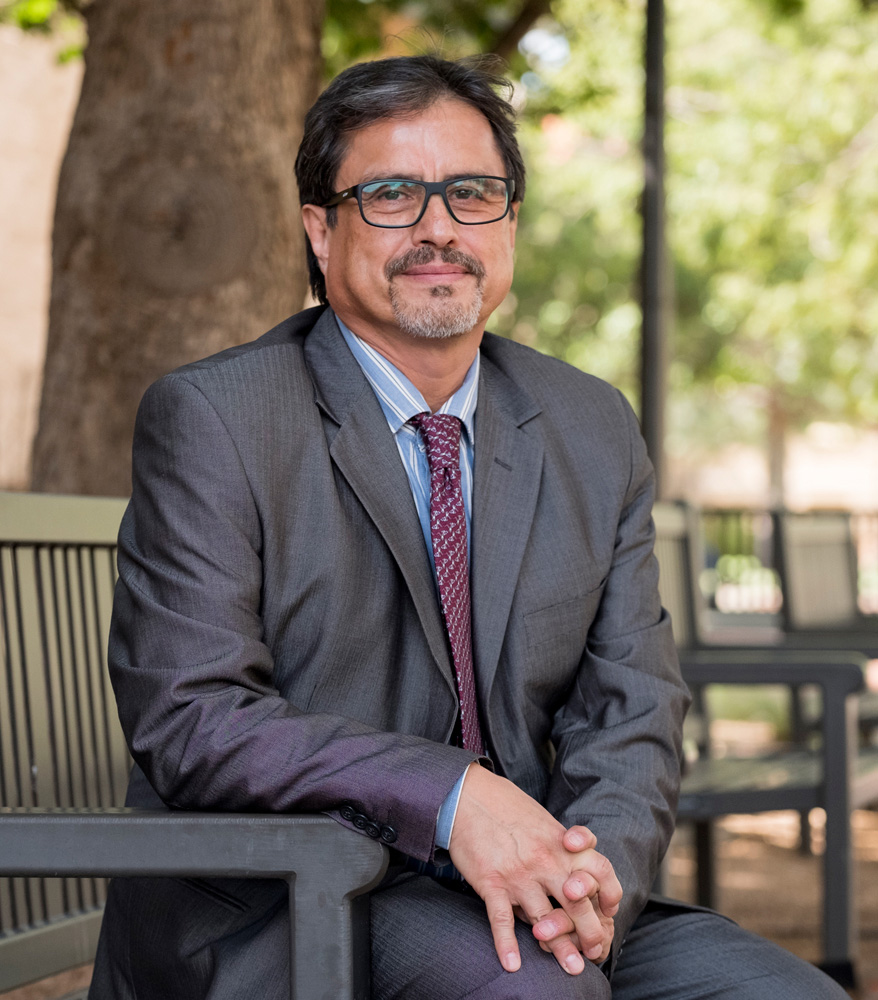First NAS Member at Texas Tech to Focus on Crop Issues, Building High-Impact Program
By: Karen Michael

Texas Tech University's first National Academy of Sciences member compares the genomes of organisms to a book written in an alphabet of just four letters.
"You build up words with these four letters, and the order of the letters is what makes the word. And the word is each gene that plays a function," Luis Herrera-Estrella said. "If you change the letters, you can change the message. And in that way, you can improve tolerance to drought, or salinity, or whatever. But first, you have to understand which letters you have to choose."
Herrera-Estrella, one of the top plant molecular biologists in the world, started work at Texas Tech in the fall. He plans to use cotton as a model system to develop technologies that are applicable more generally to all crops grown under conditions of drought, heat, and salinity.
While he will focus on crops that are important to West Texas and the South Plains, he said the work in the Institute of Genomics for Crop Abiotic Stress Tolerance, or IGCAST, will be applicable in many regions of the world.
"We know that there are plants that are extremely drought-resistant, and we know that there are plants that are extremely salt-resistant. And we know plants that are very cold resistant, and heat resistant. But most of the plants share the same genes. It's like we and monkeys: We share the same genes. We are 99 percent identical. But how these genes are wired, how they communicate is a little more complex in humans," Herrera-Estrella said. "It's the same in plants."
He said he hopes to develop technologies that will make genetic changes to plants easier and faster, describing the current process as very slow.
This is, he said, a challenge, but he laughed and added that Texas Tech President Lawrence Schovanec told him it was better described as an opportunity.
Herrera-Estrella said he hopes to have a team of 20-30 graduate students, postdoctoral researchers, and research professors working in IGCAST within three to four years.
He headed a team of four researchers who relocated to Texas Tech from Mexico, and he hopes to hire four more researchers within a year.
Herrera-Estrella was enticed to come to Texas Tech with funding of $5 million from the State of Texas Governor's University Research Initiative, or GURI, and a matching grant from the university. Herrera-Estrella said the university is building a state of the art greenhouse facility for his research.
"We have a very good infrastructure," he said of the facilities under construction at Texas Tech, including the new Experimental Sciences Building II, in which IGCAST will have an entire floor, and a new greenhouse.
Eric Hequet, Horn Professor and Chair of Department of Plant and Soil Science, helped recruit Herrera-Estrella to Texas Tech.
Hequet said Herrera-Estrella's work in genomics and plant stress could result in mitigating the effects of drought on plant yield for the producers of this region.
"We need to find ways of dealing with lack of water," Hequet said. "That's the reason we are bringing him."
But he said Herrera-Estrella's manner is also appealing.
"Very easy to approach, very easy to talk to. So far everything is going great, and I'm very, very optimistic about the future," Hequet said.
Herrera-Estrella said he hopes to bring success to Texas Tech.
As a student in Belgium, he worked on a project which led to the first transgenic plant in the world at the State University of Ghent, where he completed his doctorate and conducted postdoctoral research.
"When I was a PhD student, I was extremely successful. Unusually successful. It was not that I'm a genius or anything. It's just that there was an environment and a time to do important things. So when I graduated with my PhD, I graduated with a high number of publications, but more than that, I graduated with three publications in Nature, one publication in Science," Herrera-Estrella said.
He returned to Mexico, dreaming of conducting research that could help his country, and was told by older researchers that it would be impossible to replicate his success as a student there.
"I showed them it was possible," Herrera-Estrella said.
Then he decided it wasn't enough to be personally successful – he wanted to teach others to do the same thing. In Guanajuato, Mexico, he created the National Laboratory of Genomics, an institute within the Center for Research and Advanced Studies, or CINVESTAV.
After five years, he looked at the results that the National Laboratory of Genomics was producing; out of the 600 full-time researchers in the entire CINVESTAV institute, his lab of 20 people was producing 40 percent of the high-impact papers published from the entire institute.
He recruited young people and encouraged them to publish one high-quality paper per year, and to look for opportunities to use research to create patents.
"That's one thing that I want to bring to Texas Tech. It's not that we want quantity; we want quality," Herrera-Estrella said. "This research will have to be published in high-impact journals."
He also encouraged the young researchers he hired to work on research that would have a high impact over seeking career development. If you do something important, he said, career development will follow.
Discoveries
-
Address
Texas Tech University, 2500 Broadway, Box 41075 Lubbock, TX 79409 -
Phone
806.742.3905 -
Email
vpr.communications@ttu.edu
